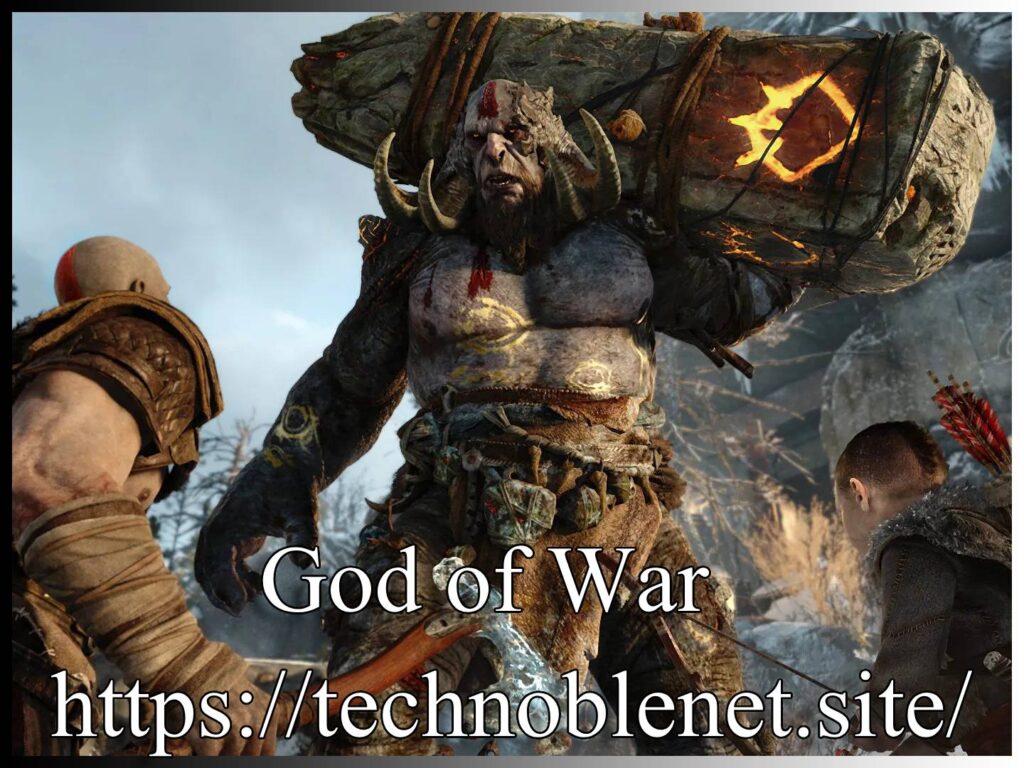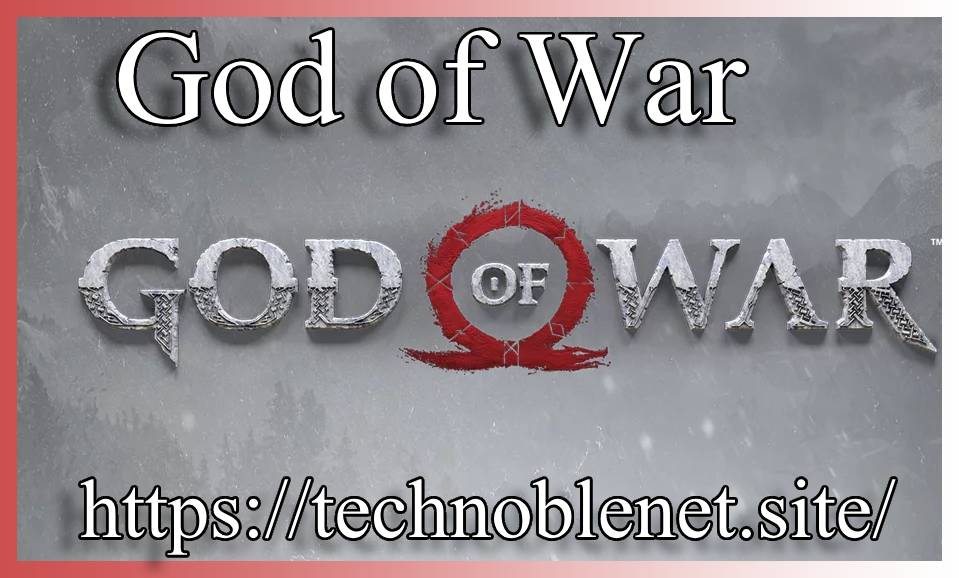Discover the epic saga of God of War in this ultimate guide. Explore Kratos’ journey, mythological roots, gameplay evolution, and why this iconic video game franchise continues to captivate millions of players worldwide.
In the pantheon of action-adventure video games, few titles command the respect and admiration of fans like God of War. Developed by Santa Monica Studio and published by Sony Interactive Entertainment, God of War first launched in 2005, but its influence stretches far beyond its release date. From its brutal combat to its mythological storytelling, the franchise has set a benchmark for narrative-driven gameplay. Over the years, God of War has evolved, both technically and thematically, leaving an indelible mark on the gaming industry.
Table of Contents
1. Origins of the God of War Franchise:Video game
The idea for God of War was conceived by David Jaffe, who sought to create a game that blended Greek mythology with intense, visceral combat. Inspired by titles like Devil May Cry and Prince of Persia, Jaffe aimed to craft an experience that was both cinematic and action-packed.
The original God of War was released exclusively for the PlayStation 2 in March 2005. It introduced players to Kratos, a vengeful Spartan warrior on a mission to kill Ares, the Greek God of War. With a compelling narrative, engaging puzzles, and adrenaline-pumping battles, the game quickly became a commercial and critical success.
2. Kratos: A Complex Anti-Hero
At the heart of God of War lies Kratos, one of the most iconic characters in gaming. Initially portrayed as a relentless killing machine driven by rage and vengeance, Kratos’ backstory reveals a tragic figure haunted by the death of his wife and child—events for which he holds Ares responsible.
2.1. The Blades of Chaos
Kratos is instantly recognizable by his Blades of Chaos, chained weapons that symbolize his servitude to Ares. These weapons allow for fluid and devastating combos, making Kratos a formidable warrior in combat.
2.2. Evolution of Kratos
With the release of the 2018 God of War, Kratos underwent a significant transformation. Now older and more reflective, he has moved to the realm of Norse mythology, accompanied by his son Atreus. This shift added depth to Kratos’ character, turning him from a one-dimensional warrior into a father grappling with his violent past.

3. Game-by-Game Breakdown
The God of War series has spanned several console generations and mythological settings. Here’s a look at each major installment:
3.1. God of War (2005)
- Platform: PlayStation 2
- Plot: Kratos, a servant of the Olympian gods, is tasked with killing Ares. Along the way, players uncover Kratos’ tragic backstory and confront various mythological beasts.
- Impact: It set a new standard for action games with its fluid combat, quick-time events (QTEs), and cinematic presentation.
3.2. God of War II (2007)
- Platform: PlayStation 2
- Plot: Betrayed by Zeus, Kratos seeks revenge and aims to change his fate. The game ends on a cliffhanger, setting up for the next installment.
- Impact: Enhanced graphics, better boss battles, and deeper storytelling cemented the franchise’s reputation.
3.3. God of War III (2010)
- Platform: PlayStation 3
- Plot: Kratos leads the Titans in an assault on Mount Olympus. The game features epic battles against gods like Poseidon, Hades, and Zeus.
- Impact: Known for its scale and brutal finishing moves, God of War III was a technical marvel at the time.
3.4. God of War: Ascension (2013)
- Platform: PlayStation 3
- Plot: A prequel showing Kratos’ early days after breaking his bond with Ares.
- Impact: Introduced multiplayer for the first time, though it received mixed reviews compared to the main trilogy.
3.5. God of War (2018)
- Platform: PlayStation 4 (Later released on PC)
- Plot: Kratos now resides in Norse lands and sets off on a journey with his son to scatter his wife’s ashes from the highest peak.
- Impact: A soft reboot, this game redefined the franchise with an over-the-shoulder camera, deep storytelling, and RPG elements.
3.6. God of War: Ragnarök (2022)
- Platform: PlayStation 4 & 5
- Plot: Kratos and Atreus must confront the prophesied events of Ragnarök while dealing with gods like Thor and Odin.
- Impact: Lauded for its emotional storytelling and refined gameplay mechanics.
4. Gameplay Mechanics
The God of War series is best known for its engaging and brutal combat system. Over the years, it has undergone significant changes.
4.1. Combo-Based Combat
The early games relied heavily on combo chains, allowing players to execute stylish and powerful attacks using the Blades of Chaos.
4.2. Puzzles and Exploration
Environmental puzzles and platforming segments provide a break from combat and encourage exploration. Players must solve challenges using acquired weapons and skills.
4.3. Boss Battles
Every entry in the series features epic boss battles, often against gods or mythological creatures. These encounters are both cinematic and mechanically demanding.
4.4. RPG Elements (Post-2018)
Starting with the 2018 installment, God of War introduced RPG-like systems, including:
- Skill trees
- Craftable gear
- Side quests (called Favors)
- A semi-open world structure

5. Mythological Inspirations
5.1. Greek Mythology
The original trilogy is steeped in Greek mythology, featuring characters like:
- Zeus
- Athena
- Hades
- Medusa
- The Titans
It reimagines these figures with dark, often twisted interpretations that fit the game’s gritty tone.
5.2. Norse Mythology
With the 2018 reboot, the setting shifts to Norse mythology, introducing:
- Odin
- Thor
- Freya
- Baldur
- Jörmungandr (World Serpent)
This transition not only brought new lore but also introduced themes of parenthood, destiny, and redemption.
6. Visual and Audio Design
6.1. Graphics
Each God of War game pushed the limits of its respective console generation. From the detailed character models to sprawling mythological environments, the visual design is consistently top-tier.
6.2. Soundtrack
Composed by artists like Bear McCreary (2018), the music blends orchestral elements with ethnic instruments to evoke the game’s mythological settings. The sound design, from the clash of weapons to guttural roars of monsters, adds to the immersive experience.
7. Awards and Recognition
God of War (2018) alone won Game of the Year at The Game Awards 2018, among many other accolades. The series as a whole has received praise for:
- Narrative depth
- Gameplay innovation
- Character development
- Artistic direction
The franchise has sold over 50 million copies worldwide as of 2023.
8. Cultural Impact
8.1. Merchandise and Media
The success of God of War has led to a wealth of merchandise including:
- Action figures
- Apparel
- Art books
- Graphic novels
A live-action TV series adaptation is currently in development with Amazon Prime, indicating the franchise’s expanding footprint beyond gaming.
8.2. Academic and Philosophical Discourse
The series is often analyzed for its themes of revenge, fate, and redemption. Kratos’ journey is viewed as a reflection on the human struggle with inner demons, making it a subject of academic discussion.
9. Future of the Franchise
With God of War: Ragnarök closing the Norse saga, fans are eager to know what’s next. Possible future directions include:
- A new mythological setting (e.g., Egyptian, Japanese, or Mayan mythology)
- A deeper exploration of Atreus’ story
- A potential multiplayer spin-off or co-op experience
The developers have stated their commitment to evolving the series while maintaining its core identity.
Conclusion
The God of War franchise stands as a testament to the power of storytelling in video games. From its brutal beginnings rooted in Greek mythology to the emotionally nuanced journey through Norse legends, it has continually reinvented itself while staying true to its essence.
Kratos’ evolution from a vengeance-fueled warrior to a thoughtful father and reluctant god mirrors the maturation of the gaming medium itself. With its groundbreaking gameplay, stunning visuals, and profound narratives, God of War has not only shaped the action-adventure genre but also influenced how games are perceived in popular culture.
